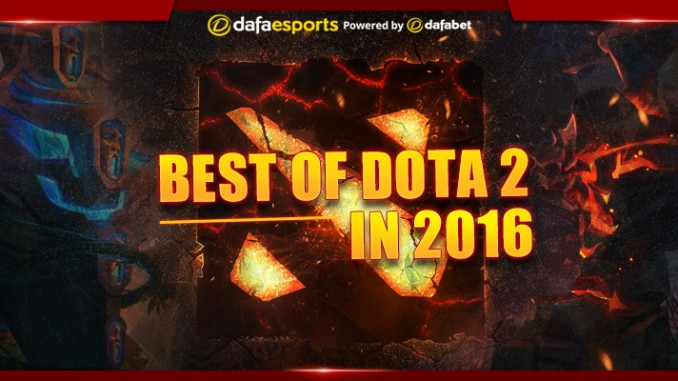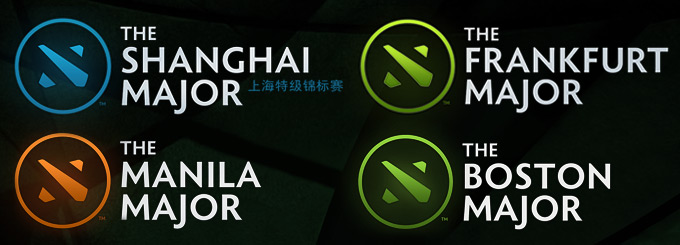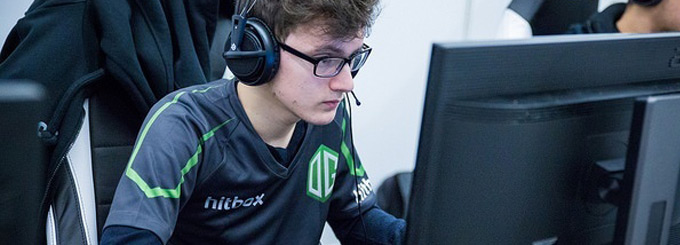
Last year will certainly be remembered as one of the most eventful and spectacular in the history of Dota 2. We witnessed the rise of new players and teams as well as the downfall of established stars such as BuLba, Alliance and Team Secret to an extent. New innovations in infrastructure were introduced, while the record prize pool for The International was broken yet again as the popularity of the eSport further increased.
And amongst all of this, we saw some great action which contributed to a memorable 12 months. Here are just a few of the highlights.
Wings Gaming

Undoubtedly the team of 2016, the previously unknown Chinese outfit made their mark at ESL One Manila in April by triumphing in convincing fashion over some of the most established names in Dota 2. Wings left a lasting impression with their unpredictability, but it was their execution of team fights that was their strongest suit.
Enjoying the hype over the following months, they crumbled in their first Major in Manila, finishing 13-16th despite being amongst the favourites to win it. All was redeemed at The International, however, as Wings dominated throughout to claim the crown, beating Digital Chaos 3-1 in the Grand Finals.
Known as an outfit of highly skilled individuals, Wings Gaming made a name for themselves as a creative team with one of the widest hero pools in Dota 2. Their unpredictability, along with their tendency to experiment while making improvised combinations, struck fear into the hearts of their opponents, and this places them as the most impressive Dota 2 team of the year.
Valve Innovates

Although Valve announced the introduction of the Valve Major tournaments two years ago, with the Frankfurt Major being the first to take place in November 2015, last year was when the rotation was fully implemented.
Unlike the Frankfurt Major, the first Major of 2016 in Shanghai did not get off to a good start as there were problems regarding organization, although it must be noted that the quality of the action itself did not suffer. The subsequent Manila Major was definitely a bigger success and it was here where history was made as OG became the first team to win two Valve Major events.
The final Major of the year in Boston eliminated the lower bracket, making each match count more and thus ramping up the sense of excitement. Teams were seeded for the playoffs based on their performances in the group stage, resulting in more competitive action, particularly towards the latter stages of the tournament.
Apart from creating events that would compete with The International in terms of interest and prestige, Valve made a move towards roster stability with the introduction of transfer periods in an attempt to reduce the number of teams disbanding. This meant that each team wanting to participate in Valve events could only sign or release players during a set period. If they ignored this, they faced sanctions such as losing an invitation to a tournament or having to start at the lowest possible qualification level. Since its introduction, teams have largely adhered to the deadlines and complete team disbands have become a rarity.
Miracle-

Amer “Miracle-” Al-Barkawi was the star player of 2016, drawing praise from both the community and his colleagues as one of the best mid players in the world. He was the driving force behind OG’s considerable pre-Fall Shuffle achievements, the most notable of which included 1st places in DreamLeague Season 5, The Manila Major and ESL One Frankfurt, as well as 2nd place at The Summit 5.
The Jordanian joined the ranks of OG after The International 2015 and the bold move of signing an unproven player was rewarded as the player fit right in. Flashy in style, Miracle- ran uncontested for a large part of 2016 in the mid lane, demonstrating mastery of a wide pool of heroes. His handling of the Invoker and Juggernaut were particularly memorable.
Miracle- has since moved to Team Liquid, where he helped secure 1st place in DreamLeague Season 6.
The Year of Balance

2016 can be described as the Year of Balance when it comes to Dota 2 hero strength. A total of 19 major versions have been released since the game came out as a beta in 2011, but editions 6.87 (April) and 6.88 (June) set records in terms of the heroes selected.
At The International 2016, 105 out of the 110 available heroes were picked – a record for the number of unique heroes used in any Dota 2 event. The reliability of each hero in the 6.87 and 6.88 versions naturally led to different hero selections and metas being played. The 6.88 update was as close to balanced as the game had ever been, but this crystallized into the rather annoying to watch “illusion meta” at the Boston Major, meaning another update was due.
Consequently 2016 will also be remembered as the end of an era as the new 7.00 patch was introduced in December, featuring more changes than any other. The new patch contains the first hero that was not present in the Defense of the Ancients, the Monkey King. Coupled with the unparalleled number of changes to the map design as well as the introduction of hero talents which boost various heroes’ abilities such as hit points, damage increase and spell amplification, 2017 promises to be another stellar year in Dota 2.










